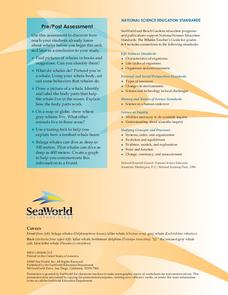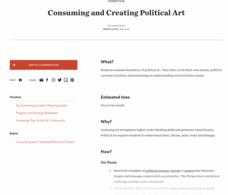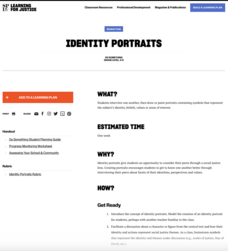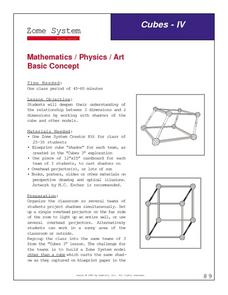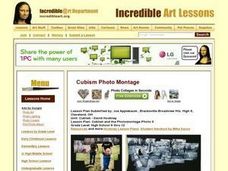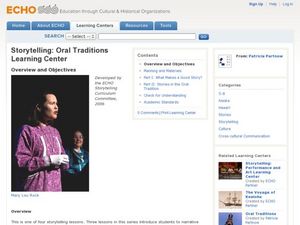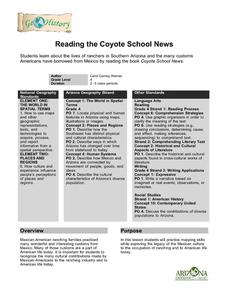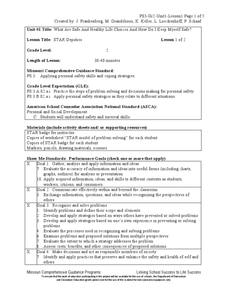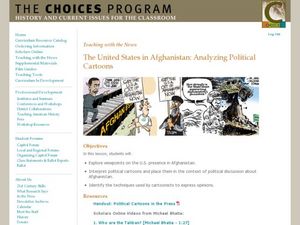Smithsonian Institution
Mary Henry: Journal/Diary Writing
A great way to connect social studies with language arts, a resource on Mary Henry's historical diary reinforces the concepts of primary and secondary sources. It comes with an easy-to-understand lesson plan, as well as the reference...
Sea World
Whales
A whale of a lesson is sure to intrigue your elementary oceanographers! Learn about the mammals of the sea with a series of activities about whales, dolphins, and porpoises. Kids complete worksheets about the anatomy of a whale, create a...
Mathematics Vision Project
Geometric Figures
Logical thinking is at the forefront of this jam-packed lesson, with young mathematicians not only investigating geometric concepts but also how they "know what they know". Through each activity and worksheet, learners wrestle with...
Outdoor Learning Center
Outdoor Survival
Which of the following can you survive without for the longest time: water, food, or a positive mental attitude? The answer may surprise you. Guide learners of all ages through games, activities, and discussions about surviving in the...
NOAA
Technology II
Ping, ping, ping. The last installment of a 23-part NOAA Enrichment in Marine sciences and Oceanography (NEMO) program explores technology use in marine studies, such as sonar. Activity involves simulating sonar techniques to identify a...
University of California
The Vietnam War (1945 – 1975)
Have you ever wanted to do something so perfectly you wound up not doing it well at all? Young historians use primary and secondary documents to analyze the United States involvement in the Vietnam War. The issues surrounding the...
Newseum
Decoding an Editorial Cartoon
What advantages do political cartoons have over written editorials? Scholars discuss the topic by exploring editorial cartoons. Working in small groups, pupils analyze an Uncle Sam cartoon and complete a worksheet. As a fun extension,...
Teaching Tolerance
Consuming and Creating Political Art
A picture is worth a thousand words, but political art may be worth even more! After examining examples of political cartoons, murals, and other forms of public art, class members create their own pieces to reflect their ideals and...
Teaching Tolerance
Identity Portraits
When you look at me, what do you see? Young learners answer this question by creating a portrait that reflects the identity of one of their peers. First, class members create interview questions. Then, they interview classmates to...
Curated OER
Cubes-IV
Students examine the relationship between three dimensions and two dimensions by working with shadows of cubes and other models. Students work in groups and use Zome System Creator Kits to try and build a shape other than a cube that...
Curated OER
Cubism - David Hockney
Identify Cubist works (namely the works of Picasso and the Cubist-inspired works of David Hockney), then express or create a work showing a time frame.
Curated OER
Storytelling: Oral Traditions Learning Center
Students explore the oral traditions. In this storytelling instructional activity, students compare and contrast stories from the cultural traditions of Alaska and Hawaii.
Curated OER
Net "Working"
Upper elementary and middle schoolers explore the properties of various polygons. They use video, resource links, and engage in hands-on activities in order to construct geometric nets. This fine plan should lead to increased...
Curated OER
Jazz in America
Students explore Bebop in America by listening to music and answering questions.
Curated OER
Jazz In America - Lesson Plan 6
Fifth graders explore cool jazz and how it reflected American culture in the 1940's and 1950's.
Curated OER
Jazz in America
Students explore the Jazz of today and its future. They answer questions and listen to music.
Curated OER
Adinkra Cloth
Young scholars locate Ghana on a map of Africa and discover features of Ghana culture. They synthesize the importance of Adinkra symbols and cloth to the people of West Africa and design an Adinkra cloth.
Curated OER
Reading the Coyote School News: Lives of Ranchers in Southern Arizona
Fourth graders examine the effects of Mexican-American ranching on life today.
Curated OER
STAR Deputies
Second graders engage in a instructional activity that is about the sharing of following rules to follow the law. They concentrate on the making of safe choices. Students use the examples to have class discussion. They also role play...
Foreign Policy Research Institute
Islamic Civilization in Spain
There may be elements of this lesson that are useful for a unit on Islamic influence in Spain; however, there is little alignment between the learning objectives and the final product --a ten page report. For example, some of the...
Curated OER
Storytelling: Writers' Workshop Learning Center
Evaluating a variety of narrative texts can help build strong writers. Pupils identify plot elements and their relation to personal experience, then apply what they gleaned from the class discussion to create their own narratives.
Curated OER
The U.S. in Afghanistan: Analyzing Political Cartoons
Students take a closer look at the U.S. presence in Afghanistan. In this global issues instructional activity, students analyze political cartoons related to the War on Terror. Students discuss their impressions of the war and then...
Curated OER
Early Jazz
Young scholars gain an understanding of early jazz. They study Dixieland and the Roaring Twenties. They examine the American historical significance and cultural implications of early jazz.
Curated OER
Jazz In America
Students explore the Jazz Era in America not only by answering questions but listening to music as well.
Other popular searches
- Drawing Art Perspective
- 1 Point Perspective Drawing
- Escher Perspective Drawing
- 2 Point Perspective Drawing
- Drawing Perspective
- Linear Perspective Drawing
- Art Perspective Drawing
- Perspective Drawing Bridge
- 2 D Perspective Drawing
- Perspective Drawing Lessons

